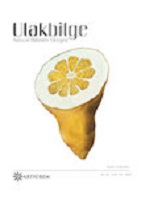DENİM ÜRÜN ÜRETİMİNDE SU AYAK İZİ İLE SÜRDÜRÜLEBİLİRLİK
SUSTAINABILITY WITH WATER FOOTPRINT IN DENIM PRODUCTION
Author(s): Nuray ÖZ CEVİZ, Necla TektaşSubject(s): Business Economy / Management, Energy and Environmental Studies, Economic history, Socio-Economic Research
Published by: Sanat ve Dil Araştırmaları Enstitüsü
Keywords: Better Cotton; denim; sustainability; water footprint; wastewater;
Summary/Abstract: Introduced in 1930s America, the denim fabric quickly became popular around the globe thanks to its durability. Denim surfaces are still the most preferred type of fabric in textiles today, and used not only in manufacturing of jean pants, but also in a wide range of products from home textile to accessories as a fashion element. Therefore, this widely used and preferred surfaces need to be analyzed and monitored in terms of sustainability. Main reason behind this is the high number of processes these fabrics go through during manufacturing phase. From harvesting the denim’s main material, the cotton from the fields to transforming these into a wearable/usable textile product, natural water resources are used extensively in the process. Even though we are all aware of the significance of water for our lives and planet, rational use of limited water resources is far from a reality, especially for the water consumed for production purposes. In terms of using the water resources, the textile and garment industries are among the top consuming sectors. Especially the ever-widening areas of use for denim products over the years and the excess amount of water used in manufacturing of these products are among the issues that need to be addressed. Within the context of this study, processes utilized during the manufacturing of denim products, water footprint of a denim product, new technologies and sustainability were analyzed. While the developed technologies have increased the water consumption up to 95%, the sector seems to be open to new research and development activities.
Journal: Ulakbilge Sosyal Bilimler Dergisi
- Issue Year: 10/2022
- Issue No: 76
- Page Range: 954-962
- Page Count: 9
- Language: Turkish

